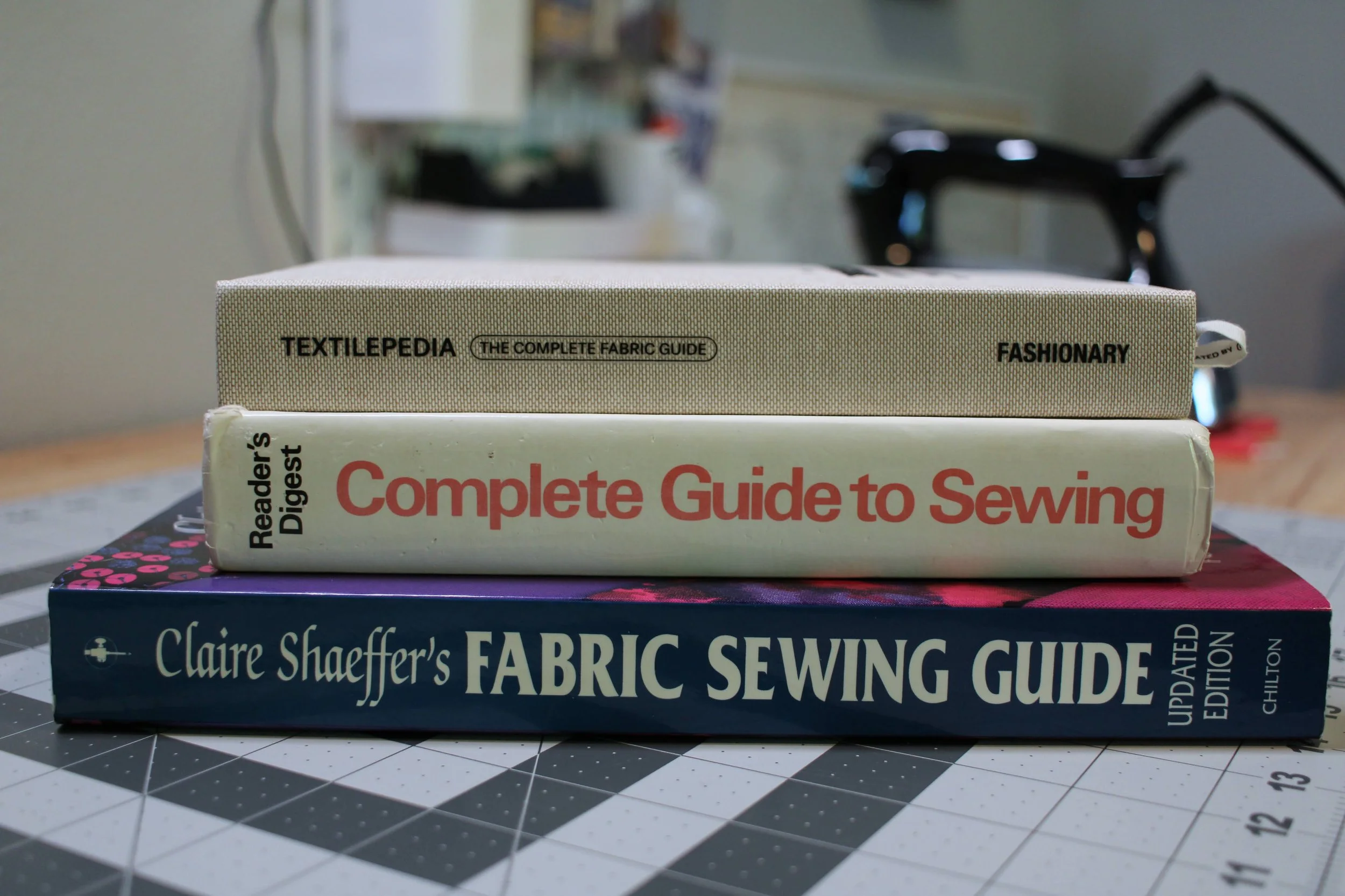I Can Use a Sewing Machine–Now What?
How to leverage effective learning techniques to achieve your sewing dreams.
So you took the first step on your sewing journey by becoming a sewing machine operator. Congratulations!
They say the first step is the hardest, but in sewing there are many disparate skills to learn. And when you’re self-taught, all of those “first steps” can add up to something that feels daunting.
Don’t let your sewing machine (and your wardrobe dreams) collect dust on a shelf.
By leveraging three learning techniques–immersion, practice, and community–you can become as good as you want to get.
Where do you want your sewing journey to take you?
Why do you want to sew? Is it to...
Make the occasional accessory or simple garment alterations?
Become comfortable enough with commercial patterns that you can sew without written instructions?
Design your own clothes knowing you can’t afford to attend a formal fashion institute?
By getting clear on your end goal, you can set expectations and more easily track your progress. But whether you want to get good enough, become good at your craft, or anything in between, they all start in the same place: immersion, deliberate practice, and community.
Immerse yourself in sewing vocabulary
Before you go out and buy all the books, start by watching content creators or reading sewing blogs. Sew-alongs and tutorials are great ways to begin to get familiar with sewing terms (what does it mean to understitch?).
Once you’re ready to buy some books, here are three I highly recommend:
Reader's Digest Complete Guide to Sewing. If you can only afford one book right now, start here. From a sewing machine troubleshooting to pattern cutting and fitting, this book is a fantastic “all-in-one” resource.
Textilepedia: The Complete Fabric Guide. Learning about fabric is central to your sewing journey. This guide is a great affordable visual resource as you get to know different woven and knit fabrics, their histories, as well as common applications.
Claire Shaffer’s Fabric Sewing Guide. This is a comprehensive fabric guide, including practical tips for cutting, sewing, and garment care. If Textilepedia is where you start before picking out your fabric, Claire Shaffer’s Fabric Sewing Guide is your trusty companion as you sew!
I get most of my books used and, where possible, I seek out older editions. My Reader’s Digest Guide is from 1978!
Practice basic sewing techniques
What are basic sewing techniques? The best place to start is with hems and seams–basically ways to stitch two or more layers of fabric together while also tidying up the frayed edges of fabric. (If you’re the self-learning type, both Claire Shaffer’s and Reader's Digest have examples you can use to follow along with.)
Purchase a couple of yards of plain cotton muslin fabric. (If you have a fabric store local to you, this is a great excuse to also get to know different kinds of fabrics by touch!) Muslin is not only great for mocking up projects down the line, but when cut into rectangles the size of your palm, they’re perfect for practicing sewing techniques. If muslin isn’t accessible to you, using (or thrifting) old cotton bedding works too.
Once you’ve got the basics down, you can put them into practice with small projects. Scrunchies, tote bags, bucket hats, and simple upcycling projects are popular ways to rack up small wins and boost your confidence as a sewer.
If you want to work with garments–whether or not you design your own–learning how information is encoded on patterns as well as pattern cutting basics will be a helpful place to start.
Keep up the momentum with community
Learning alongside experts and more experienced peers is a sure way to fast track your ability to get good at sewing. These can be 1:1 sewing lessons, online sewing communities, or classes that push your skill level.
The final piece of advice I’ll leave you with is to take the time to think about what you want your sewing practice to look like. Will you set a habit goal to sew an hour a day in the evenings? A couple of hours during the weekends while binging your favorite show?
Experiment with what brings joy and ease to your sewing sessions. Ease here doesn’t mean you don’t work on hard things, but rather that you set yourself up to be able to do the hard thing. But more on that in another blog!
Keep making progress, one stitch at a time.
Want more content like this? Subscribe to the Stitch x Sew newsletter. It’s your place for monthly crafting motivation, as well as your guide to upcoming events both at Stitch x Sew and across the PNW.

